Serge Lutens Fille En Aiguilles (2009): Medicine Mandala with a Sense of Humor - or Enlightenment Not Guaranteed {Perfume Review}
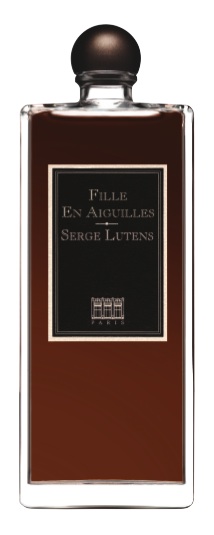
Opening a flacon of a new perfume by French artist and aesthete Serge Lutens always holds the promise of standing as another worthy episode in the olfactory adventure that he has been able to create since his debut scent Nombre Noir in 1982. No one is expected more than him, in collaboration with Christopher Sheldrake, to deliver a piece of bravura and make perfume paradigms shift. No one is also more spoken out against.
Of all the fragrance artists that practice in the contemporary period that is, those persons that choose to express themselves through the art of perfumery by appealing to our thinking and feeling nose, Lutens is probably the one most attuned to the mind-teasing dimension of fragrances. By design or simply because he cannot help it, his perfumes are psychological objects. With Lutens, you are not following the evolution and application of the theoretical tenets of a school of perfumery but rather you are following the expansion and reaffirmation of a personal universe of thoughts and sensations.
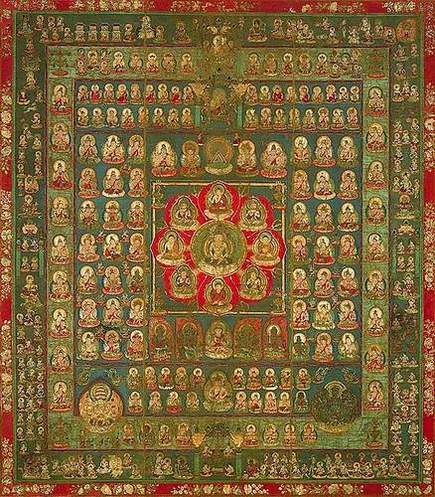
In Fille en Aiguilles, I see a new unexpected didactic dimension emerging in the style of the teachings of a wise old monk using a wooden stick to awaken us from our lazy slumbers. He will not say anything very precise, but he is seemingly sticking a branch of pine in the smalls of our backs to prevent us from thinking that we are awake. The perfume seems to say in not-so-subtle a fashion: this is strong medicine and if you find it too potent for you, then leave me alone, go see elsewhere. The single-mindedness of the evergreen accord in this pine-centering scent, its ruffling-of-the-feathers quality is a reminder of a tradition of eye-opening, mind-enlightening -- and with Fille en Aiguilles -- mind-and-nose-clearing practices carried on by sages in ancient tales. Terebenthine has been extracted from pinus maritima L for ages to cure blocked noses and airways. In perfumery a blocked nose could be the sign of a blocked mind. By highlighting this note in this manner (this is no Brut), Lutens is also going back to an archaic tradition of perfumery little different from medicine while adding a philosophical bent more than a religious one...
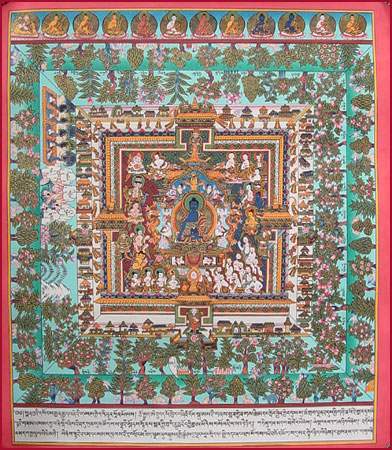
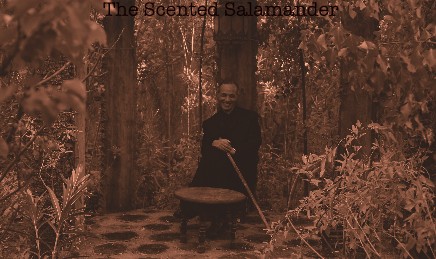
Serge Lutens could be seen as a Zen master of sorts offering an almost painful lesson in clarity, just like he could be that wise old man recounted by Voltaire who pushed a man over a bridge in a seeming act of mindless sadistic impulse only to reveal later that the gesture saved the life of that passer-by because the sage knew that the bridge was going to collapse. It is as if Lutens knew we had a problem and he is saying here is the remedy for obstructed sinuses: feel your new nose, clear your thoughts, smell and think better or perish. The presentation of Fille en Aiguilles has been likewise made with an elliptic philosophical tone as if saying all along: it is neither this nor that. In fact, the copy for the perfume has been the most laconic to date, the most pedagogical as well and like a seeming pronouncement on the impossibility of putting a perfume into words. So we got, Tick, tick, tick or Cri, cri, cri for several lines of text. Smelling the perfume, remembering the accompanying song of the cicadas and seeing the Cheshire-cat smile on Lutens's face, I suddenly at the end of the fragrance development burst into a laughter as the perfume turned into the probing pine stick of a Buddhist monk.
Fille en Aiguilles: Medicine for the Nose and Soul
The premise seems quite simple. We are offered a pine perfume. The new, revamped Salons du Palais Royal Shiseido website asserts this simple truth using an almost mischievous tone, "Fille en Aiguilles...de pin!" or Girl in needles, pine needles! It is hard to disagree with this essential characterization. Indeed, the new accord here is pine and then underneath, you have the whole Lutensian life journey of notes, his favorite mutterings and obsessions. The new perfunctory descriptions also visibly stand as a critique of the logorrhea, the over-abundance of words and are an invitation to go back to the perfume itself. As Lutens believes at the same time that the perfume wearer has the last word on the perfume she or he is wearing, one may elect to offer one's own interpretation.
Fille en Aiguilles is thus however more than just about pine. The phases of the perfume succeed each others like clouds chasing in the sky. It is very complex, in turns, green, honeyed, fruity, intense, resinous, smoky, tarry, cumin-y, spiritual, chocolate-y, caramel-y, salty, dry, fishy, ambery, musky, sweet, milky, foresty, cinnamon-y, mentholated, fresh etc. The description has to adopt the cadenza of automatic writing to attempt to be faithful.
A dark secret accord of dry fruits reinforces the association in my mind with a wintery mountain culture where fruity freshness is hard to come by. Fille en Aiguilles is dark green, pruney, with mentholated aspects and a savory note. As the perfume winds down it becomes lighter, more aerial and delicate. The fruits become less wintery and more summery evoking sunny apricots with a pleasant tartness and sweetness to them. The apricots are salty and woodsy with a smoky nuance to them.Then it becomes warm again, deep, ambery, resinous like the warmth of a Swiss chalet room.The terebenthine aspect of the perfume becomes very strong in the end to the point where smelling it for a while it feels like you are undergoing a treatment and getting a taste of the medicinal bite on your tongue. At the same time it is intriguingly refreshing and cool. The longer drydown seems to betray an iris-y and ambrette-seed skin note reminiscent of some of the Chanel dydowns.
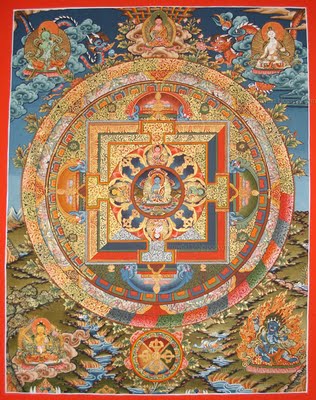
Beyond the materiality of the notes, the scent possesses the capacity to evoke. Like for most Lutens perfumes, it offers an oniric quality that invites the mind to travel through time and space. For me, it instantly evokes the white-washed stupas in Nepal, the incense in the early morning in Kathmandou mixed with aromas of food and natural smelly goods: hot soups, dry fish, crudely cured leather. I even recall an episode I had forgotten of the sensation of entering a medieval-like inn on a mountainous road as if in a time warp. It was small, dark, crooked and filled up to the ceiling which was very low, with steam arising from bowls of soup eaten for breakfast. I can see the rickety wooden benches, the semi-obscurity, the smell of close bodies, broth, salt, smoke and soot.
The perfume also evokes for me the medicine worn around the neck by travelers in the Himalayas as a treasured possession, kept in leather pouches, with its purifying camphoraceous facet, perhaps tucked away in musky-smelling pouches purloined by a musk deer hunter. If there were notes of blood in the composition the illusion would be even more vivid. The perfume has a mentholated, sinus-clearing property, but in an elegant and sophisticated way albeit an efficacious one, like the precious medicine of a Tibetan noble. By further external association, I even recall one of my most memorable olfactory discoveries of the sojourn: the rancid strong taste of yak butter. I want to go back.
All the vestigial medieval aspects of Nepalese culture seem to become highlighted through this perfume, including the historically faint dividing line existing between perfume and medicine as exemplified by Hungary Water in the medieval ages. Lutens already explored this source of inspiration with Rousse inspired by Tiger Balm, like Heeley did with Spirit of the Tiger. But here, the purpose is bolder and as becomes clear to the mind/nose, therapeutic and possibly purifying. It is a perfumery venue that is little explored but potentially rich in creative orientations as perfumes inspired by medicine are still under-appreciated although I would list Eaux de Cologne and more particularly Guerlain Jicky, Après L'Ondée and L'Heure Bleue has having this orientation.
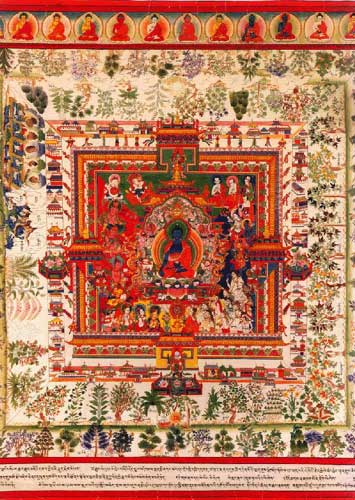
Fille en Aiguilles is a work that is complicated and mind-teasing evoking for me the labyrinths of a mandala, in particular the type called medicine mandala due to the curative overtones of the composition. Like a mandala drawn on the ground with colored sand over several days and then blown away in a few instants, a perfume however intricate, is meant to be ephemeral. Finally, in the omnipotence of the evergreen accord with its nose and head-clearing property, there is like the teachings of a Zen master and an enormous wink. The perfume ends making me laugh at its single-mindedness.
By forcing us to literally open our nostrils with the astringency of a curative pine accord, Lutens is going back to an archaic tradition of perfumery in which beneficial properties found in a fragrance were not just aesthetic and poetic but literally physical and prophylactic. Perfume being more than an assemblage of notes, ingredients and maceration time but also a form of thought and an ensemble of signs, it is interesting to me to see how the Lutens compositions tend to become more complex overtime while keeping all the accords that matter. In other words, the Lutensian perfumery has become both more conservative and more intricate. It also is characterized by a movement of existential deepening. At the same time that Lutens perfumes have become more multi-layered like mille-feuilles of meaning, they have also become simpler, more identifiable as the essential accords are forever recurring as in a Nietzschean-flavored illustration of the Eternal Return.
Lutens with Filles en Aiguilles appears not just as a perfumer but a doctor, a savior of humors, moods, and nasal airways. As if to say, smell this first before venturing to smell other perfumes, your nose is blocked and you didn't know it!
I could very well see this perfume as an intended pun with a hefty dose of humor as perhaps suggested by the "ad copy". Lutens is in a playful, didactic mode and is encouraging you with a twinkle in the eyes to smell truly, to smell better.







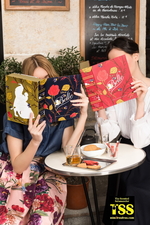
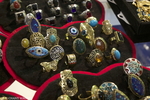
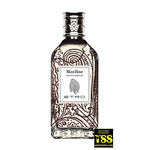
Never have I read such a luscious and more evocative description of a scent. I am reeling from it quite literally and have aside some time to visit the SL counter at my local store today.
Thank you so much.
Mario
Thank you very much Mario.
Serge Lutens is the master of evocative perfumery
I'm a HUGE fan of SL. He's innovative,un-apologetically daring. So different (therefore, not for everyone). Unfortunately, he's become too expensive for my budget (I can still remember buying my first bottle - Fleur de l'Oranger - for $92 at Barney's. Sigh!). Hubby gives me a SL on very special occasions. I know I have another one coming. ;)
And yes, Marie-Helene's reviews are nothing short of poetic. Have you ever thought of writing a book on scents, MH? You could certainly teach the "experts" (Chandler Burr, and that self-centered clown, Luca Turin) a thing or two. I'll sign up for a copy right now. :)
Thank you Mitsouko for your encouragements :) I will let Luca Turin pick up the gauntlet if he wants to :)
Serge Lutens has become more expensive, that's true, but he is still more affordable than many other niche brands. At least I know I had this thought cross my mind when realizing the bell jars' prices could be hiked in the current inflationist context :)